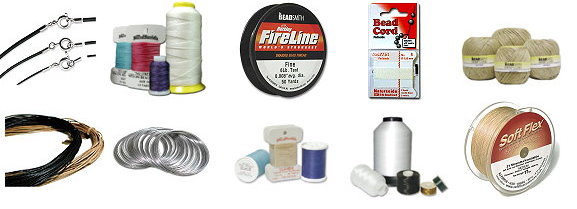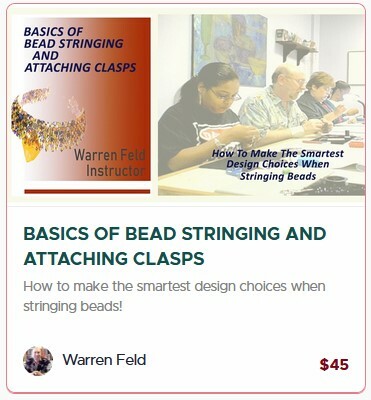Categories
Categories
- Home
- STRINGING MATERIALS
- CABLE WIRE
CABLE WIRE
STRINGING MATERIALS at Land of Odds with Warren Feld Jewelry
STRINGING MATERIALS
There all kinds of stringing materials. Some are premium, some economy. For each one, there are many brands. I only sell my favorite(s) in each category. Also see the section on TOOLS AND SUPPLIES.
BEAD STRINGING ONLINE VIDEO TUTORIAL
|
The brand I recommend is SOFT FLEX. [I only recommend one other brand - FlexRite, which I do not carry now.] Soft Flex is very supple, very strong, and with a thicker and nonporous nylon sheathing. I warn you against using any other brand. They can't compete. Cable wires are stainless steel wires twisted together and covered with a nylon sheathing. What gives this material its strength and durability is the nylon sheathing's ability to keep the braided wires from unraveling. Once the nylon sheathing is violated -- from it being to thin or too porous -- and the twisted wires are exposed to the air, they immediately unravel and break. I suggest: With cable wire, you will be using a crimping pliers, crimp beads, crimp covers and horseshoe wire protectors. |
Stringing beads on cable wire, thread or cord is not difficult, but it does require a thorough understanding of the pros and cons of the various parts and stringing materials that you will use. The bead stringer has several goals to achieve: You want your piece to
Cable wires come in different qualities, usually indicated by the price per foot of the product. It is difficult to compare cable wires across brands. The critical information to know about cable wire strength is called "Tensile" strength. To determine the tensile strength of a cable wire requires knowing what the wires are made of, what the nylon sheathing is made of, and how thick the nylon sheathing is. The "tensile" strength comes from how successful this combination of Wire-NylonSheathing is to keep the cable wires from un-twisting. Information about tensile strength is not provided by the manufacturers. Sometimes they identify the wire as "stainless steel", but there are hundreds of grades of stainless steel. Once the nylon sheathing is pierced or deteriorates in some way or allows air and contaminants to penetrate it, the cable wire rapidly loses its strength, and breaks. Some brands organize their low end to high end based on the number of strands braided within the cable. Other brands do not. One company's 49-strand product might be much weaker and less flexible than another company's 49-strand product. |
 Loading... Please wait...
Loading... Please wait... 

